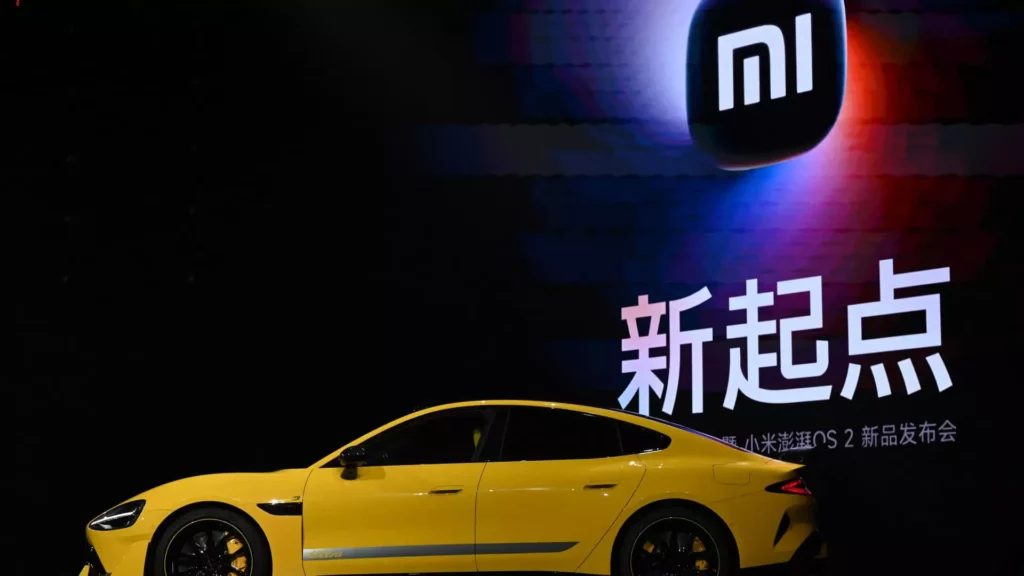In an era where electric vehicles (EVs) are rapidly transforming the automotive industry, Xiaomi, a company traditionally known for smartphones and consumer electronics, is making waves by stepping into the EV arena. The company’s recent announcement regarding the delivery of over 20,000 SU7 electric vehicles in October highlights not only its aggressive production strategy but also its commitment to establishing a notable presence in a competitive market dominated by established players like Tesla and local rivals such as Nio and Xpeng.
Xiaomi’s venture into automobile manufacturing dates back to 2021 when it first unveiled plans to produce electric vehicles. Since then, the company has invested substantially in establishing a dedicated manufacturing plant and has shown a relentless pursuit of its ambition with aggressive production and sales targets. With a goal of delivering 100,000 SU7 vehicles by the close of November, Xiaomi is on a clear path to assert its capabilities within the world’s largest electric vehicle market.
One of the most remarkable aspects of Xiaomi’s EV strategy is its pricing model. The SU7 launched at a price around $4,000 lower than Tesla’s most affordable offering in China at the time—the Model 3. This aggressive pricing highlights Xiaomi’s intent to attract cost-conscious consumers and disrupt traditional market dynamics. Tesla’s swift reaction, slashing the Model 3’s price by approximately $2,000, underscores the fierce competition in the EV sector.
While other Chinese electric car makers have taken years to achieve significant production milestones, Xiaomi’s rapid delivery of over 75,000 SU7 vehicles since its launch is noteworthy. In stark contrast, companies like Xpeng and Nio achieved the production of 100,000 vehicles over six years and eight years, respectively. This suggests that Xiaomi’s operational efficiency and rapid scaling are promising indicators of its potential to become a strong contender in the EV marketplace.
Despite the impressive early sales figures, Xiaomi’s path is fraught with challenges. The competition in the EV market is incredibly fierce, and the landscape is continuously evolving. Xpeng recently set a monthly delivery record of over 20,000 vehicles through its more affordable Mona brand, while Nio’s struggle to maintain deliveries above 20,000 serves as a reminder of how quickly fortunes can turn in the EV space.
Furthermore, as Xiaomi aims to launch a high-end sports version, the SU7 Ultra, priced at approximately $114,304, it must navigate the expectations of a more discerning consumer base. The rapid receipt of over 3,600 preorders, accompanied by a significant deposit requirement, indicates strong interest. This success may stem from the vehicle’s undefeated performance on the Nurburgring race track in Germany, highlighting the intersection of performance and design that modern consumers increasingly expect.
Market analysts have responded positively to Xiaomi’s performance, predicting that the company could deliver as many as 250,000 vehicles in the upcoming year—an increase from previous forecasts. This optimistic outlook is coupled with an increase in Xiaomi’s stock price target, reflecting confidence in the company’s expanding footprint in both the automotive and technology sectors.
The introduction of Xiaomi’s flagship Mi 15 smartphone and its advanced features signals that the company’s growth is not solely limited to EV production. Its ability to innovate in the electronics space, alongside its automotive aspirations, suggests a broader strategy of diversifying revenue streams and enhancing its brand appeal in multiple sectors.
Xiaomi’s foray into the electric vehicle market represents an exciting chapter in the ongoing evolution of the automotive industry. With substantial early deliveries, competitive pricing, and ambitious production targets, Xiaomi appears poised to challenge the status quo. However, as the competition intensifies and consumer expectations rise, the company will need to continuously innovate and adapt to maintain its momentum. As the electric vehicle landscape shifts, all eyes will remain on Xiaomi as it navigates this dynamic and highly competitive arena.

